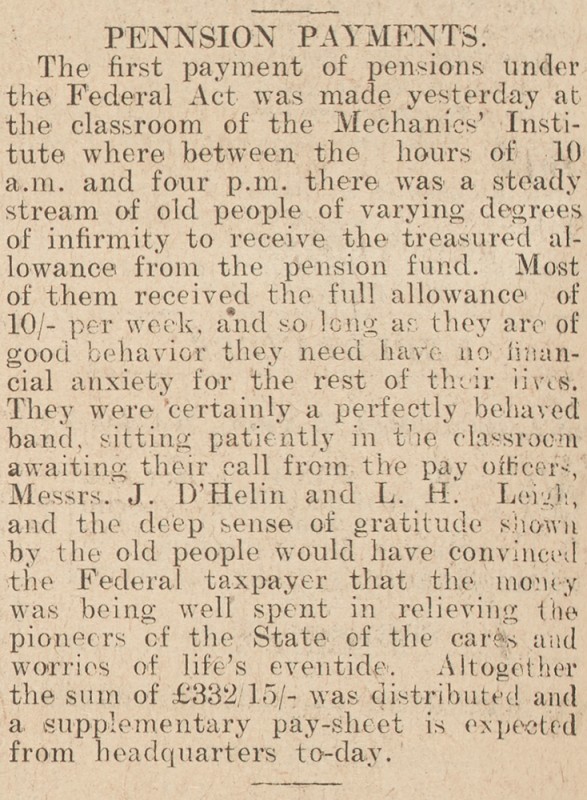Invalid and Old-age Pensions Act 1908
15 April 1909
The first national welfare scheme is established in Australia.
The Invalid and Old-age Pensions Act 1908 provided basic income support for those above the retirement age and for those who were physically or mentally unable to work to support themselves.
The pension set the model for social security in Australia:
- funds were taken from government revenue
- eligibility was based on circumstance, not past earnings
- payments were means-tested to target those most in need.
Australian men over the age of 65 years were entitled to apply for an old-age pension of £26 per year. Women over 60 could apply from December 1910. Few people were eligible for the pension at the time, because life expectance was only 55 years for men and 59 years for women. The national scheme replaced state-based pension schemes in New South Wales, Victoria and Queensland.
Initially, not everyone was eligible for the pension. People who were originally excluded from receiving the pension included:
- Aboriginal and Torres Strait Islander peoples
- 'natives' of Africa, New Zealand and the Pacific Islands
- those considered ‘not of good character’
- non-residents
- those who had been residents of Australia for less than 25 years (5 years for the invalid pension).
Geelong Advertiser, 16 July 1909

Geelong Advertiser, National Library of Australia
Description
A newspaper article published in the Geelong Advertiser, 16 July 1909. The article is called ‘Pennsion [sic] Payments.’ This article describes the first pension payment to 'old people of varying degrees of infirmity' after the Australian Parliament created the Invalid and Old-age Pensions Act 1908.
You may save or print this image for research and study. If you wish to use it for any other purposes, you must declare your Intention to Publish.